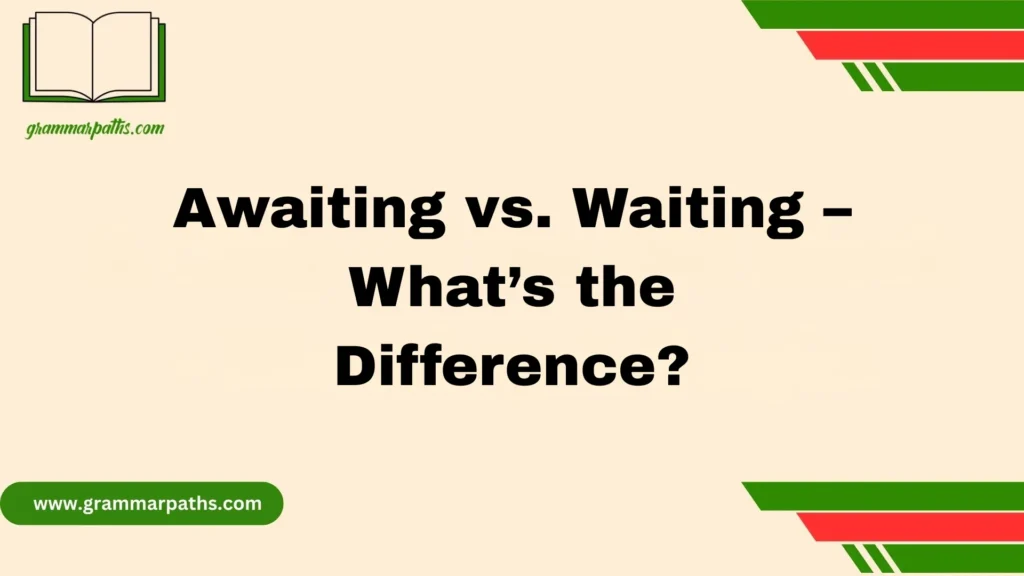When it comes to writing or speaking in English, choosing between “do not” or “don’t” can be a subtle but important decision. Both forms are grammatically correct and carry the same basic meaning—they are used to express negation or prohibition. However, the difference lies in their tone, formality, and context of use.
The phrase “do not” is the full form, often used in formal writing, academic papers, or situations where clarity and emphasis are needed. On the other hand, “don’t” is a contraction, which combines “do” and “not”, and is more commonly used in informal speech, casual writing, and everyday conversations.
Understanding when to use each can help you communicate more clearly and appropriately, whether you’re crafting a professional email, writing an essay, or chatting with friends. While they are interchangeable in many cases, choosing the right one can make your language sound more natural, confident, and well-suited to the situation. In this article, we’ll explore the key differences, provide examples, and guide you through the best usage practices for “do not” vs. “don’t” in both writing and speech.
What “Do Not” and “Don’t” Actually Mean
At their core, “do not” and “don’t” both express negation. The latter is simply the contracted form of the former.
- Do not: full, formal negation
- Don’t: contraction combining “do” + “not”
| Form | Full Form | Contraction | Means |
| do not | ✔ | ✘ | negative |
| don’t | ✘ | ✔ | negative |
You’ll find both used in spoken and written English. Grammatical correctness demands consistency with subject-verb agreement and tense.
Formal vs. Informal: Tone That Matters
The most striking difference between “do not” and “don’t” lies in tone—formality vs. informality.
- “Do not” brings authority and precision. It fits contexts like:
- Professional emails (“Please do not hesitate…”)
- Academic writing (“We do not find evidence…”)
- Legal or policy documents
- Professional emails (“Please do not hesitate…”)
- “Don’t” reads conversational, friendly, and relaxed. Ideal in:
- Everyday speech (“Don’t forget your keys.”)
- Casual writing (blog posts, texts, social media)
- Dialogue in fiction or interviews
- Everyday speech (“Don’t forget your keys.”)
Example:
Formal: “We do not recommend using this method unless authorized.”
Informal: “We don’t recommend it unless someone OKs it.”
Spoken vs. Written English
In spoken language, don’t dominates. It sounds natural:
“Don’t worry,” “I don’t know.”
In writing, the formality of your document dictates which to use:
- Do not = sounds formal
- Don’t = approachable and casual
Busy readers might appreciate the conversational tone “don’t” brings—unless formality takes precedence.
Regional & Cultural Preferences
Curious whether accents or regions affect usage? Not much. Here’s what matters:
- American and British English treat “do not” and “don’t” almost identically.
- Slight nuance: British writers sometimes avoid contractions in formal writing more often than Americans.
- Global English (business, academia) prefers do not in formal docs, regardless of country.
Takeaway: Tone matters more than geography.
Clarity and Emphasis
Sometimes, choosing “do not” adds impact:
- “Do not touch that!” feels stronger than “Don’t touch that!”
- Scrutiny intensifies (“I do not accept that explanation.”)
Examples:
- Emphasis with full form: “Do not even consider skipping this step.”
- Casual warning: “Don’t be late.”
Common Mistakes and Misunderstandings
Here are some missteps to avoid:
- Using don’t in contexts that demand formality (legal docs, academic essays).
- Overusing do not in casual conversations, which can sound stiff.
- Mixing tone within a single text.
- Misplacing contractions in formal communications, weakening authority.
- Incorrect grammar: Anyone don’t → should be does not
List of pitfalls:
- Writing “do not” in a party invite
- Saying “don’t” in bylaws or housing contracts
- Subject-verb mismatch with “don’t”
Grammar Rules: Subject‑Verb Agreement
Present Tense:
- I/You/We/They don’t like it.
- He/She/It does not like it.
Past Tense:
- I/You/We/They did not go. (“didn’t” is also acceptable.)
- He/She/It did not go. (“didn’t” works here, too.)
Important: Do not mix tenses or forms incorrectly—greys areas like “I don’t gone” don’t work.
Examples in Context
Formal Writing vs Casual Speech
- Formal: “We do not accept returns after 30 days.”
- Informal: “We don’t accept returns after that.”
Emails
- Formal: “Please do not hesitate to contact me.”
- Informal: “Don’t hesitate to ask me!”
Dialogue & Social Media
- Dialogue: “Mom says don’t eat dessert before dinner.”
- Tweet: “Don’t sleep through your alarm tomorrow!”
Instructions
- Sign: “Do not enter.”
- Manual: “Don’t press that button.”
Table – Form vs. Function
| Context | Preferred Form | Reason |
| Academic writing | Do not | Formal, authoritative tone |
| Legal documents | Do not | Clear, unambiguous |
| Emails | Depends | Recipient & purpose dependent |
| Blogs/social media | Don’t | Conversational & accessible |
| Instructional signs | Do not | Direct, imperative clarity |
When to Avoid Contractions Altogether
Style guides offer clear direction:
- APA & MLA: Minimize contractions—especially in scholarly writing.
- Chicago Manual: Contractions are allowed, except in formal contexts.
- Corporate writing: Typically avoids contractions unless brand tone calls for friendly voice.
- Technical documents: Prefer “do not” to eliminate ambiguity.
Summary – Which Should You Use?
- Choose “do not” when you need clarity, authority, or formality.
- Use “don’t” when you want to sound relaxed, conversational, approachable.
Quick reference:
| Scenario | Use |
| Formal report | Do not |
| Academic essay | Do not |
| Email to coworker | Choose tone |
| Blog post or newsletter | Don’t |
| Instruction sign | Do not |
FAQs:
When to use does not and doesn’t?
Use “does not” in formal writing and “doesn’t” in casual speech. Both mean the same, but “doesn’t” is a contraction of “does not”, commonly used in everyday conversation.
How do you use do, does, and don’t?
Use “do” with plural subjects and “I/you/we/they”. Use “does” with singular third-person subjects like “he/she/it”. Use “don’t” as a negative form of “do”, and “doesn’t” as the negative of “does”.
What is more formal, don’t or do not?
“Do not” is more formal and often appears in writing, instructions, or serious statements. “Don’t” is informal and mostly used in speech or casual writing.
What is the meaning of “do not”?
“Do not” is used to express a command, warning, or to form a negative sentence. It means to avoid doing something or indicates the absence of an action.
How do I use don’t in a sentence?
Example: “I don’t like cold weather.”
Here, “don’t” shows that the speaker dislikes cold weather. It’s a contraction of “do not.”
What is the difference between do and don’ts?
“Do” is an action or instruction you should follow. “Don’ts” are things you should avoid doing. For example: “The dos and don’ts of email etiquette.”
Final Thoughts:
Understanding the difference between “do not” and “don’t” can significantly improve your clarity and tone in both spoken and written English. While both forms serve the same grammatical purpose—to express negation—their usage depends on context. Use “do not” when you want to sound formal, serious, or emphasize a point. On the other hand, use “don’t” in casual conversations, everyday writing, or when aiming for a more natural flow in speech.
By recognizing the subtle distinctions in tone, formality, and audience expectations, you can make more intentional language choices. Whether you’re writing an academic report or texting a friend, choosing the appropriate form between “do not” and “don’t” ensures your message is both clear and appropriate. Let your audience, purpose, and tone guide your decision—and you’ll always sound just right.

Grace Marie is the dedicated writer behind GrammarPaths.com, where she shares her passion for English grammar, idioms, and writing mastery. With a strong background in language studies and years of experience helping learners improve their communication skills, Grace creates clear, practical, and engaging content that makes English easy to understand.










